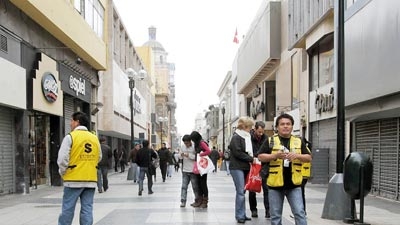Betty Albarracín goes to her bank to find out how much she owes on her credit card. However, the exact information seems to be a state secret.
“That information does not appear on the screen,” says the bank teller.
The woman, a 50-something household worker, says it makes her “furious” that she cannot find out something as basic as exactly how much she owes. She wants to know so she can avoid increasing her debt with the interest.
Albarracín’s case is similar to that of thousands of Latin Americans who visit banks every day to request services or perform operations. There is a lack of information and education on financial products that are essential for the functioning of modern societies, such as savings accounts or credit cards.
This partly explains a major contradiction in the Peruvian economy: it is the fastest-growing in the region yet has an extremely low rate of consumers with bank accounts (although this reality is changing).
According to a World Bank study, just two of every 10 Peruvians have bank accounts whereas in neighboring countries such as Venezuela and Chile, the figure is four of every 10. In Brazil, the largest economy in the region, five of every 10 citizens have bank accounts.
Latin America’s recent economic boom has promoted access to financing in all sectors of society. However, the opening of this financial world to non-experts has proven to be a headache in some cases.
Essentially, more financial education is needed.
The study, Consumer Protection and Financial Literary in Peru, takes a look at this reality. According to the report, many Peruvians lack a solid culture of savings in a formal financial institution. A survey by the OECD predating the study found that only 40% of survey respondents knew how to calculate annual interest rates. Another key finding of the OECD study was that a third of respondents did not understand the relationship between risk and advantage whereas half did not know that risk can be reduced through financial diversification.
It also became clear that the level of basic education influences financial literacy. Just 16% of survey respondents with a primary school education use the financial system whereas 40% of those with a higher education use financial products and services. Notwithstanding, the national savings rate in Peru has increased by approximately 25%, as compared with the regional average of 21%.
Promoting financial inclusion requires adequate mechanisms to guarantee the responsible use of financial services, with an emphasis on avoiding excess debt among low-income populations, according to the authors of the report.
“Consumers should be consulted and their knowledge and understanding of the different informational materials available should be assessed,” according to the report. This will help identify the gaps in knowledge of financial products that may eventually prove detrimental to the consumer.
“Banks are not very clear about their charges; the rules of the game may change at any time, without warning,” says Mario Rodríguez, a client at the same bank that Albarracín uses.

